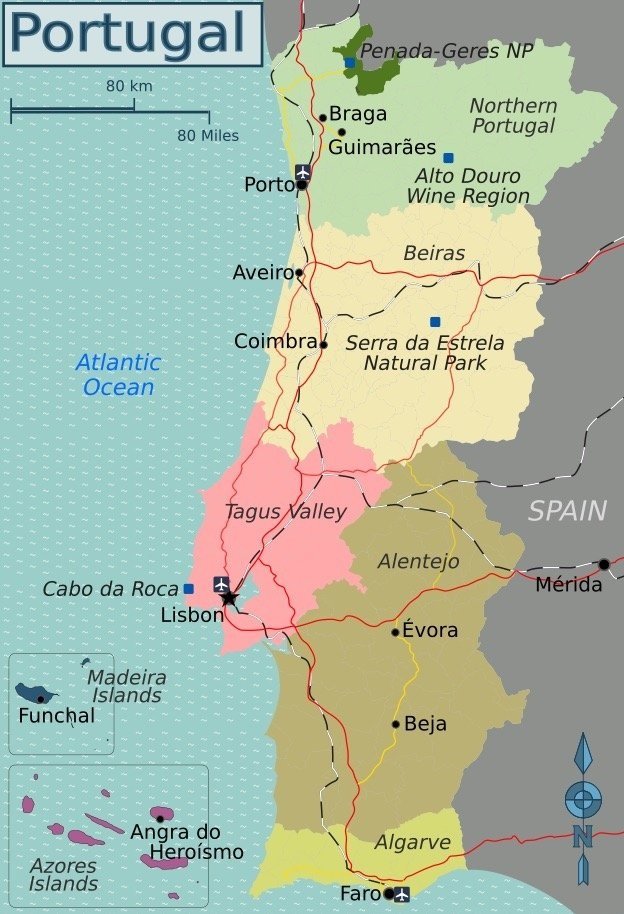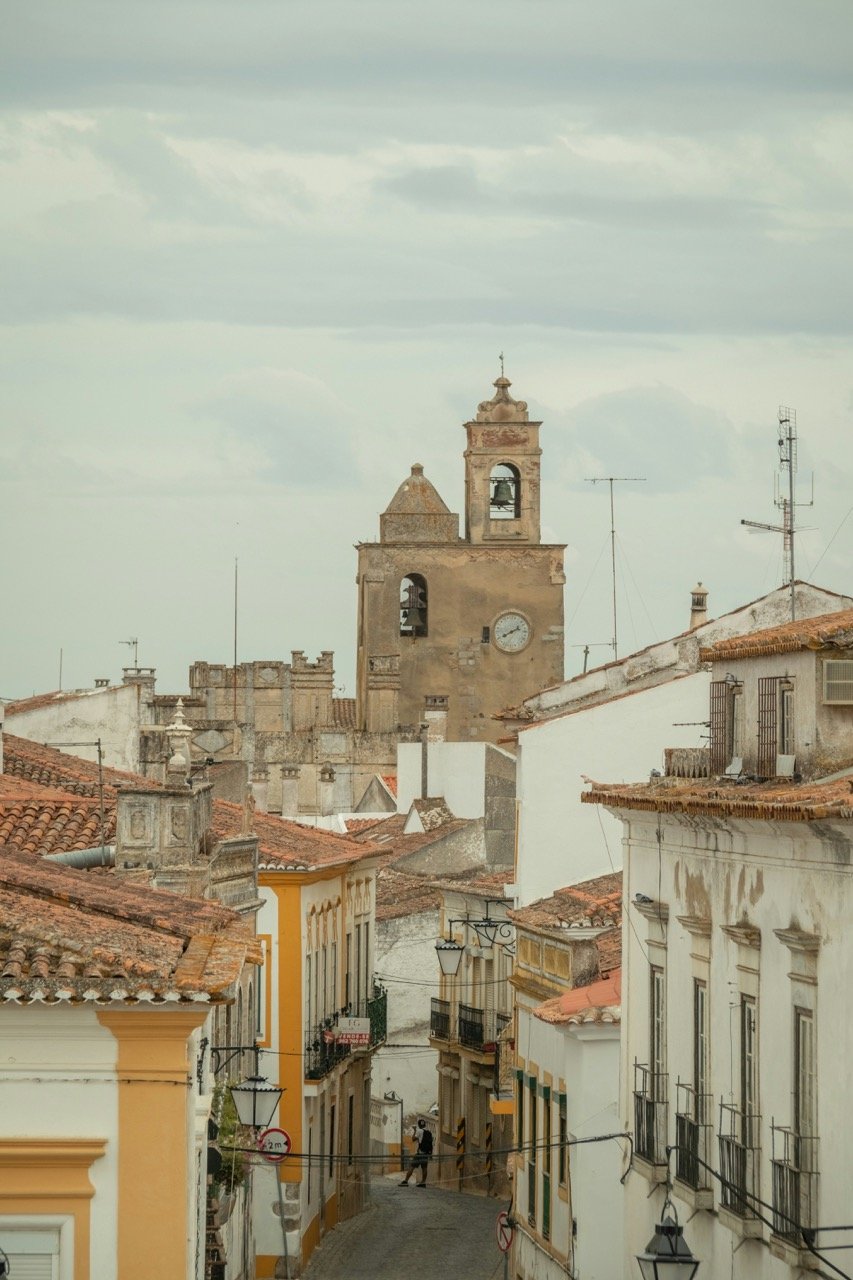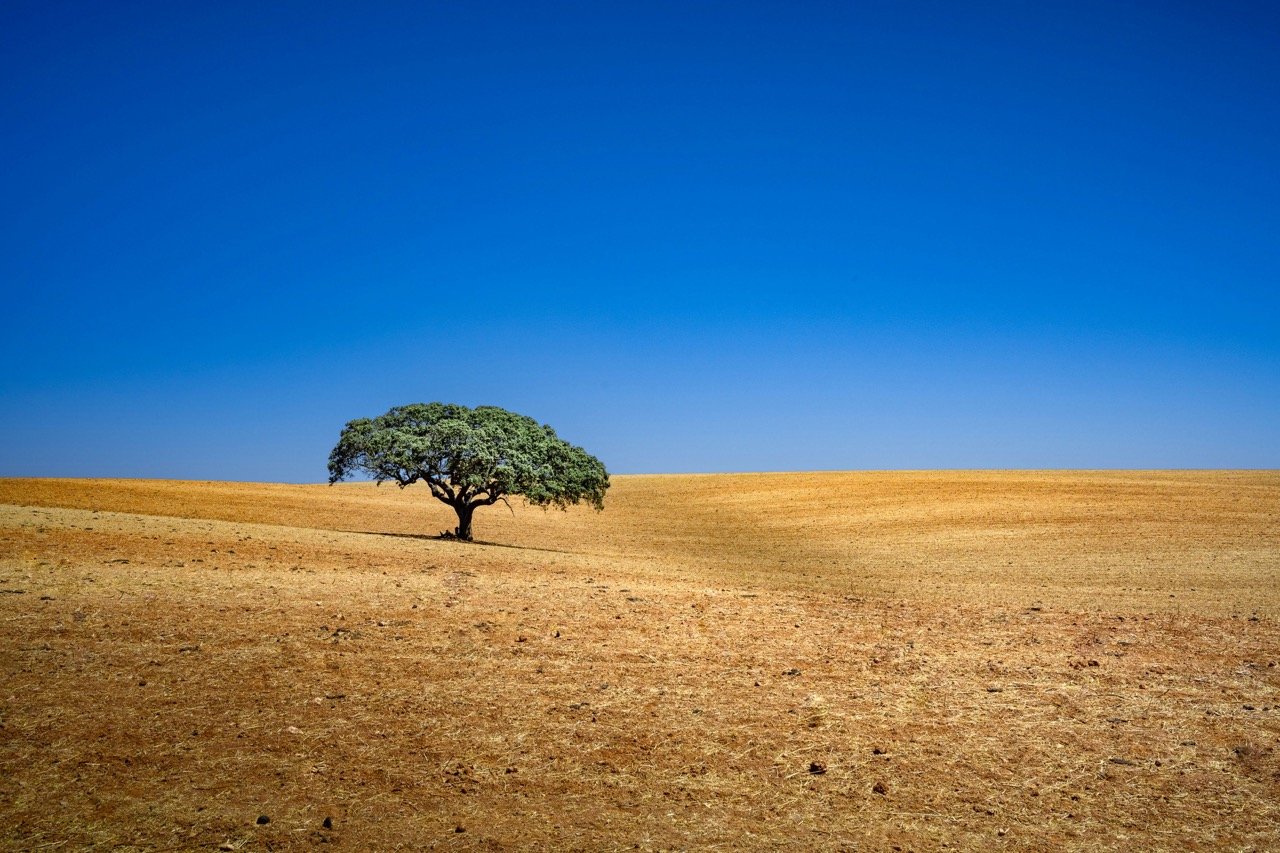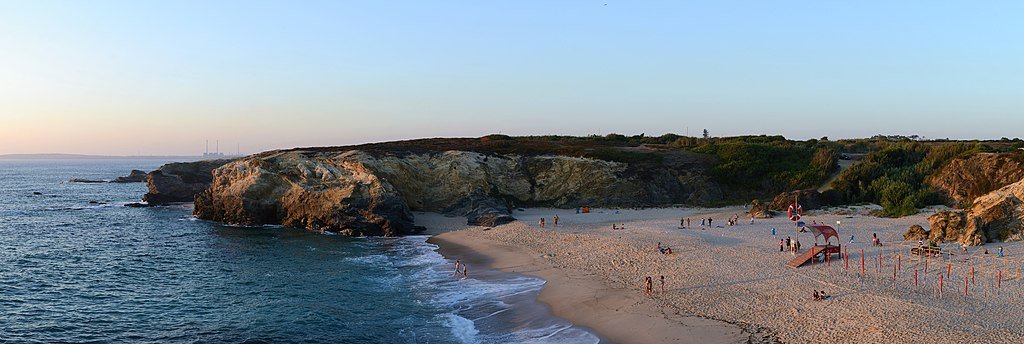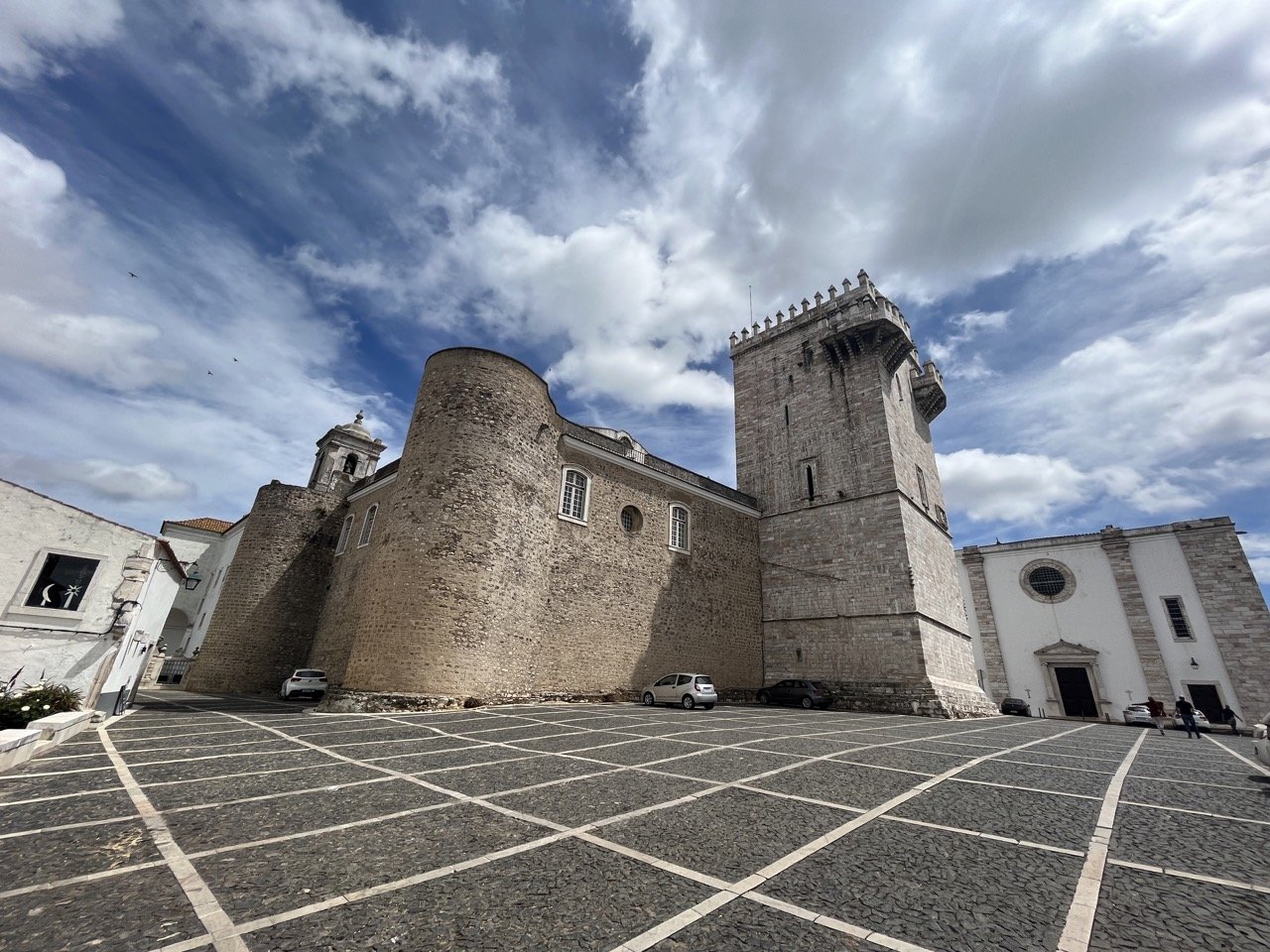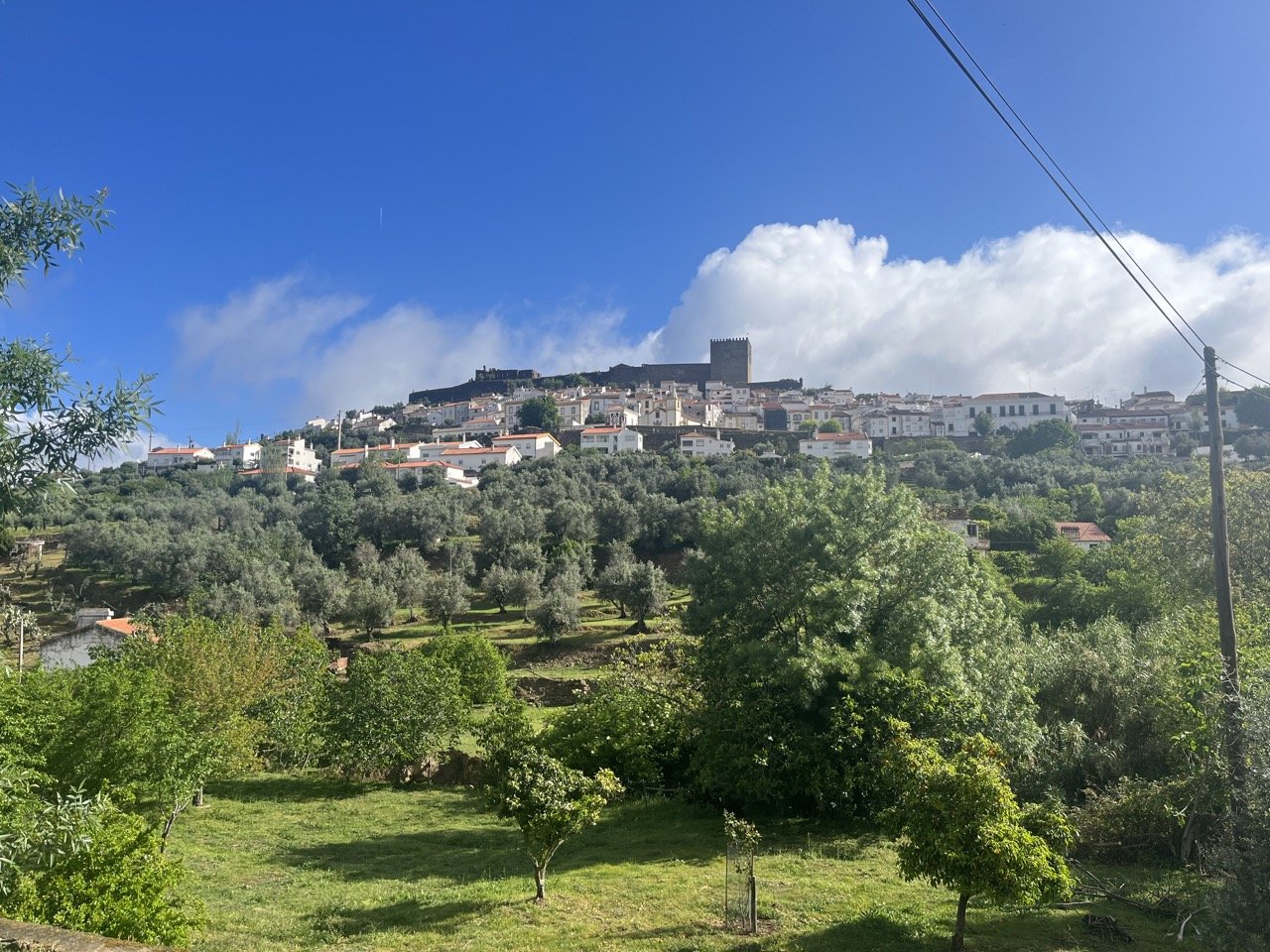A Local's Guide to the Alentejo, Portugal
Affiliate disclosure: some of the links in this article are affiliate links. If you book using one of them, we’ll earn a small commission. All of our info is free to read and free of ads, so we appreciate it!
The Alentejo is Portugal as it used to be; small walled villages with medieval cores and Roman ruins watched over by ancient castles. Portugal’s largest region and agricultural heartland, the rolling countryside is planted with cork forests, olive groves, vineyards, and all manner of crops.
Whitewashed villages pop up occasionally, like little oases, where people continue in their customs and daily rhythms much as they did hundreds of years ago.
On the region’s coast, some of the country’s best beaches, which are almost entirely unknown to all but locals, are found on the vast and dramatic Costa Alentejana and Costa Vicentina stretches.
Far from the tourist crowds, this is a place for visitors who want to experience authentic Portugal, sightsee leisurely, and relax in idyllic countryside.
Table of Contents


What is the Alentejo?
The Alentejo colored in brown. Photo: Peter Fitzgerald, (WT-shared) Shaund, Rei-artur, Joan M. Borràs, Voll, SelfieCity, CC BY-SA 4.0, via Wikimedia Commons
The Alentejo is one of mainland Portugal’s 5 administrative regions. It’s a rural swath of land in the southern half of Portugal that covers almost 30% of the country’s territory.
In its east, it marks the border between Portugal and Spain, while to the west it has a long Atlantic coastline. To the south, you have the Algarve. The regional capital is Évora, a city of 50,000 people, which is 131 km (81 miles) east of Lisbon, about a 1.5 hour drive.
The name Alentejo literally translates as “beyond Tejo”, meaning beyond the Tejo River (which is translated as Tagus in English). So, simply put, the Alentejo is the land that begins just south of the Tagus River and stretches hundreds of kilometers south to the Algarve region. To the east, the Alentejo expands inland until you reach the Spanish border.
Although little visited, the Alentejo is large. When you look on a map, the region makes up almost all of Southern Portugal, except for the narrow southernmost coastline which is the Algarve. While it is geographically vast, it only accounts for 7% of the country’s population. Towns are small and spread out and most of the region is open countryside, filled with cork forests, olive groves, vineyards, and agricultural land.
With the exception of a mountainous stretch of the Northern Alentejo, the region is mostly dry, flat, and hot - summers here are scorching.
The region’s coastline, a Costa Vicentina, is stunning with long, sandy beaches backed by imposing cliffs. Little fishing villages dot the land, beaches are wild and uncrowded, the hills offer great hiking, and you’ll scarcely see another tourist, despite the obvious appeals.
How to get here
Getting to the Alentejo is easy.
From Lisbon, you’ll find buses and trains heading to various cities and towns in the region every day. Portalegre, Évora, Beja, Alcácer do Sal, and Sines are the main transport hubs, and each has lots of arrivals and departures each day.
Évora is typically the jumping off point for further exploration of the region.
Train
Trains from Lisbon to Évora depart multiple times per hours from early morning until the evening. The journey takes about 1.5 hours and tickets cost 20 euros. Trains are all operated by the national rail carrier, Comboios de Portugal.
Bus
Like the train, buses also depart regularly for the main cities of the Alentejo, once again with Évora being the primary hub. You'll find routes with Redes Expressos and FlixBus. The trip takes 1.5 hours and tickets cost around 10 euros.
If you're heading to the Alentejo coast, the city of Sines is a little under 2 hours from Lisbon by bus and tickets cost 10-15 euros.
By car
If you'll have a car, the trip from Lisbon to Évora takes a little under 1.5 hours and is an easy drive on the A2 and A6 highways.
Why visit
The castle of Marvão
A pretty street in Évora
The town of Beja
A beach on the Alentejo's Costa Vicentina coastline
Is the Alentejo worth visiting? Always! This is the perfect place for travelers who want to see authentic Portugal and get a sense for the history, culture, and cuisine of the country without all the tourism-centered polish.
If that’s not enough, the landscapes are stunning, the beaches are amazing (and empty), the food is the best in the country, prices are cheap, and you’ll barely see any other tourists.
But to talk about why you should visit, we first need to explain how the Alentejo is divided up.
First, you have the Alto Alentejo (the most northern section), with Portalegre as the district capital. This sub-region is known for its mountains and medieval villages overlooking the Serra da Estrela Mountains. The hiking is excellent.
In Central Alentejo, you’ll find Évora, a famous UNESCO World Heritage Site, along with a unique landscape of cork tree forests, olive groves, and vineyards, which all combine to produce a fantastic cuisine.
In Baixo Alentejo (the most southern section), you have the postcard image of the Alentejo: the endless rolling hills and sparse cork trees only interrupted by the occasional white-washed hamlet or fortified medieval village. It’s barren and harsh terrain, but beautiful.
On the coastline, there’s Alentejo Litoral. Known as the Sudoeste Alentejano, this region offers fabulous beaches, which even in in the height of the summer high season can often be empty.


What is the Alentejo known for
The Alentejo is known as Portugal’s harsh interior and its agricultural heartland. It is a place of small, sleepy villages (usually with well-preserved medieval cores), open countryside, agricultural fields, and ancient traditions. Outside of Evora, it’s one of the least visited places in Portugal, and one of its most traditional.
Slow rhythms
The Alentejo is famous for its scorching summers. Did you know that you can find the hottest place in Portugal here, in the small town of Amareleja? There, you can experience temperatures reaching an astounding 48ºC degrees during the summer.
This incredibly harsh climate has shaped the lifestyles of the region’s residents over the centuries. That’s why this part of Portugal is known for its slow-paced rhythm, stillness, and quietness.
Walled cities with no visitors
Since most international visitors entirely skip coming here, only passing through on their way between Lisbon and the Algarve, the Alentejo offers a complete respite from over-tourism. As you go inland, whatever crowds you may have found elsewhere will start to disappear and you’ll find a countryside that is dotted with pretty towns built of glistening white marble.
The region’s towns are mostly small, sleepy villages that have medieval cores in varying states of preservation. In the border area with Spain, many towns have fortified castles and are ringed by thick walls.
Agricultural heartland
This region is also known as Portugal’s breadbasket, and the land here is largely characterized by ever-extending plains, with the interior being especially agricultural. A huge portion of the country’s crops, especially grain, cork, olives, and wine, are produced here. In fact, almost half of all cork produced in the world comes from the Alentejo. When it comes to wines, the Alentejo boosts Portugal to rank among the top 10 producers worldwide.
The best cuisine in Portugal
The traditional Pão Alentejano, a unique wheat bread baked in wood-fired ovens, is one of the most popular breads in all of Portugal. But what’s so special about this bread? The crunchy crust contrasts with the soft crumb, where you can feel the smell of the firewood. Try it when it’s freshly baked, with a bit of salted butter or dipped in olive oil. It’s simply delicious!
Great beaches
Visitors don’t usually associate the Alentejo with beaches, but they should. The beaches of the Costa Vicentina and Sudoeste Alentejano (the Alentejo Coast) are among the best in Portugal. They’re astonishing, pristine, accessible, and somehow still empty.
Mountains
While much of the Alentejo is flat and agricultural, the northern stretch is quite mountainous. In these hills, you’ll find imposing medieval citadels like Marvão, sitting high above the surrounding countryside and gazing over both Portugal and Spain.
How many days to spend
To visit the Alentejo, you’ll need at least 4 days. Even though this is a very short stay to explore such a big region, it's enough time to see the highlights, including both the coastline and the interior. That said, one week is really the ideal amount of time for an in-depth and relaxed first visit.
If you only have 4 days, to limit how many times you need to pack your bag, I'd recommend choosing 1 or 2 bases and then making day trips. Realistically, you could stay in Évora for the whole time and just explore from there, but driving times will be long, so I personally prefer having 2 bases. Most of the towns in the region need just a few hours to visit them, so your days can easily include visits to 3 or 4 different towns.
Évora makes for a good base to explore the interior's medieval villages while Sines or somewhere like Vila Nova Milfontes is ideal for exploring the coast.
If you have more time, a week will let you explore the region in a much more relaxed way. It’ll give you enough time to visit the main landmarks, discover the small towns and charming villages in the São Mamede mountains, roam the countryside of the Central and Baixo Alentejo, and explore the coastline between Setúbal and Zambujeira do Mar.
And most importantly, you'll be able to embrace the region’s slow-paced lifestyle and never need to rush.
The best way to see the Alentejo is to split your time between the coastline and the countryside. In the countryside, you’ll find cattle roaming a vast landscape of cork tree forests and olive groves and will happen across whitewashed medieval towns every few kilometers. On the coast, you'll discover pristine beaches and charming little fishing villages.
How to get around
Once you’re in the Alentejo, know that public transport becomes very limited and you will quickly find that having a car is essential.
For anyone spending more than a day here, you will 100% need to have a car.
Public transport
This is a sparsely populated region, and the distances between towns and other sights of interest are often considerable. While there is decent public transportation (by bus) between the Alentejo’s largest cities, and pretty good connections with Lisbon, getting between cities and smaller towns, and especially out into the countryside, is both difficult and time-consuming without a car.
You should also be aware that of the few available bus connections, many exist primarily for the purpose of allowing students to travel from their homes to their schools in different municipalities. As a result, you’ll find even fewer buses on weekends and holidays.
For most people, traveling around the Alentejo by public transport is not a realistic option.
Renting a car
Having a car will allow you to get out into the countryside and also move efficiently between towns. It will also give you the possibility to combine visits to multiple towns, wineries, and beaches into a single day. This is ideal as most towns aren't really worth much more than a few hours of your time.
Road trips to the Alentejo typically start in Lisbon (or sometimes the Algarve), so that’s where you’re most likely to pick up a car rental. However, if for some reason you want to get the car only after you’ve arrived to the region, Évora is your best bet. You may be able to find a car in one or two other Alentejo cities, but they are very small and options can be extremely limited (if you have any at all).
To check prices and book, I recommend using DiscoverCars, a car rental website that includes offerings from all the major international rental companies as well as lots of smaller local agencies, which often have much better pricing. You can often find great deals.
Taxis, transfers, and ride share apps
When it comes to taxis and ride sharing apps, you’ll find these services mostly in Portalegre, Évora and Sines. In the smaller towns and villages, you won’t normally find rideshares (like Uber or Bolt), but you may be able to get a taxi.
Even so, to get a taxi or transfers in smaller towns it is absolutely essential to make reservations in advance. You will not find them just waiting around and, because they are limited in number, you also may not have availability if you call for one at the last minute.
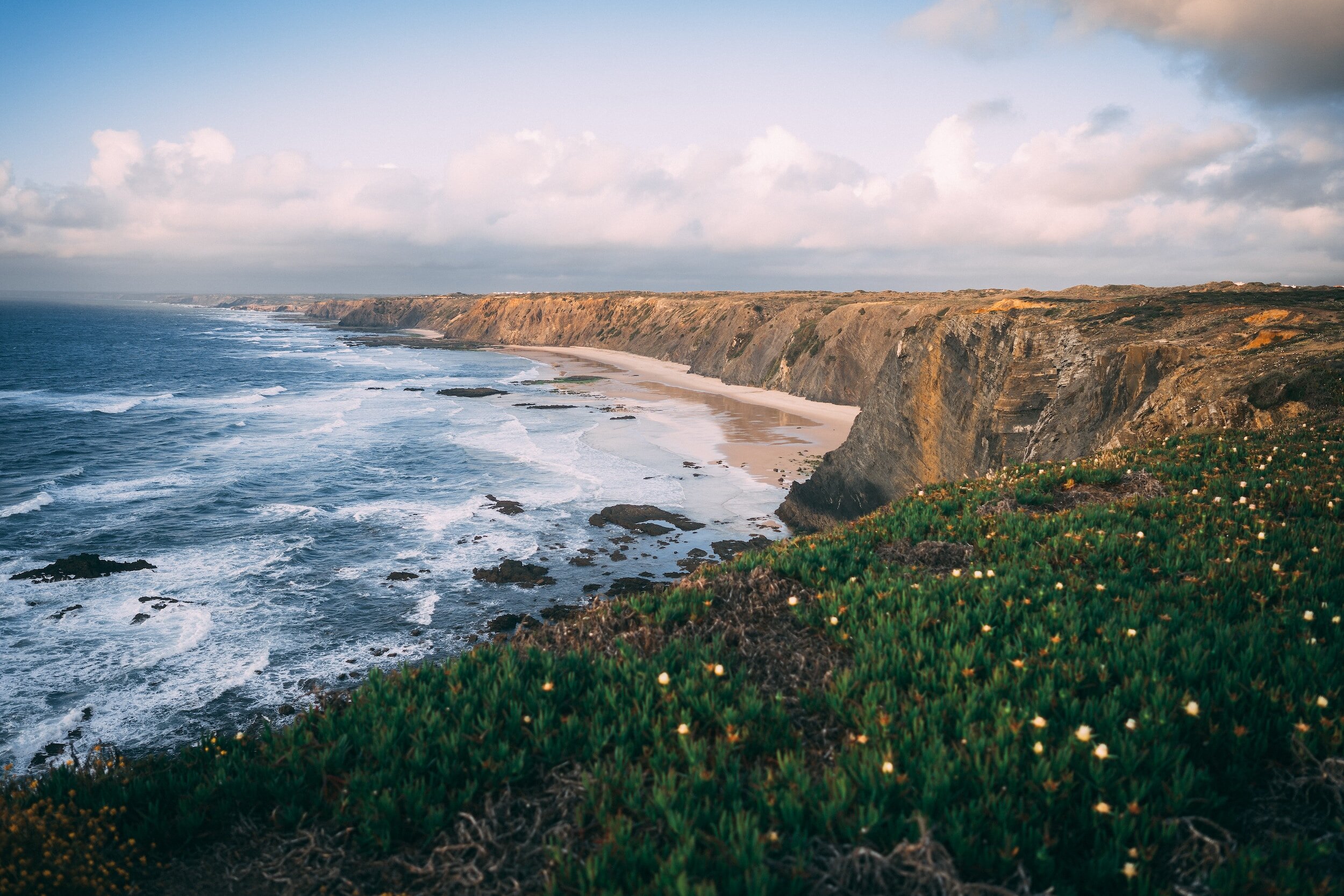
Things to do
While the region may be short on stand-out attractions that would bring the masses here, I think that’s part of the appeal: gloriously free of the trappings of mass tourism, this is somewhere that opens itself up to curious travelers who aren’t just looking to hit highlights and check boxes.
The residents also haven’t grown weary from a constant influx of tourists, so you’ll likely be met with a friendly reception from locals.
Regardless of the season, the Alentejo offers plenty of activities all year round. Here are some of my recommendations:
1. Sample the region’s gastronomic delicacies!
Would you like to explore the local and authentic Alentejo culture? Then join a wine tasting, an olive oil tasting, or a Pão Alentejano workshop. These activities are perfect opportunities to learn more about the region’s main economic activities, how they evolved over the centuries, and, most of all, to try some of the Alentejo’s trademark products.
Are you a foodie and prefer to explore Alentejo on your plate? You’re in luck! In the Alentejo, you’ll find incredible recipes that will delight your tastebuds.
Try the Açorda, the Migas à Alentejana or the Ensopado de Borrego. All these recipes have one thing in common: the traditional local bread. This way you’ll see how versatile the Pão Alentejano is and how rich the traditional cuisine is.
2. Get out into the great outdoors
On the other hand, if you enjoy being outdoors, the Aletenjo is the perfect place to admire untouched nature. The region holds five nature reserves with beautiful landscapes and diverse wildlife.
At São Mamede Natural Park, in Alto Alentejo, you’ll find the Eurasian eagle-owl, the Bonelli’s eagle, and black vultures. At Lagoa de Santo André Nature Reserve, you can admire migratory birds, such as the flamingo or the red-crested pochard.
Sado Estuary Nature Reserve is famous for being home to more than 200 species of birds and the common bottlenose dolphin.
Finally, in Costa Vicentina and Sudoeste Alentejano Natural Park, you can find ospreys, and great cormorants, as well as the Eurasian otter, wildcats, and the endangered Iberian lynx.
3. Do some star gazing!
The Alentejo is also the perfect getaway if you’re an amateur or a professional astronomer. Due to the low population density and the reduced light pollution, this region offers the best stargazing conditions in all of Portugal.
In the most isolated areas, you’ll be baffled by the perfect view over the Milky Way. If you’re lucky enough, you might even find yourself admiring a meteor shower!
4. Admire the landscapes (from above, ideally!)
For an overview of the region’s lovely landscapes, take a hot air balloon ride in Monsaraz, near Alqueva, the largest artificial lake in Europe, or go paragliding in São Mamede Mountains, in Alto Alentejo.
If that’s too much adrenaline for you, grab your camera and go on a hunt for the perfect landscape photo. Although you can find incredible locations all around Alentejo, I recommend you try the Alqueva Lake, the Mina de São Domingos, the Ilha do Pessegueiro, or the Cais Palafitico da Carrasqueira.
5. Hit the beach!
In the Sudoeste Alentejano and Costa Vicentina Natural Park, you’ll find some of the best beaches in Portugal, especially if you're into for surfing and body boarding.
Foreign visitors typically think of the Algarve as the place to go for great beaches, but there's a reason all the locals are at the Costa Vicentina.
6. Explore the lovely marble cities and towns of the interior
Turning inland and heading into the interior, you’ll begin to reach lovely cities and towns which are almost untouched by tourism. A fascinating feature that you will undoubtedly notice when visiting is the extensive use of marble as a primary building material.
Even in small towns with no other traces of prosperity, you will find yourself walking through little centers where every building is made of marble. This is because the area is incredibly rich in marble deposits, especially around the towns of Estremoz and Vila Viçosa, so it has been a primary material here going all the way back to Roman times. It is a unique experience to arrive in a small, remote town and walk past house after house of glistening white marble.
All the way east, on the border with Spain, you’ll begin to find your fair share of castles and little fortified villages, dating back to Roman times and later Arab rule in the region.
Best places to visit
Despite being one of the least visited parts of Portugal, the Alentejo is filled with wonderful places to visit. Whether you’re interested in beaches and the coast, lovely old villages, countryside, nature parks, or a bit of all of the above, the Alentejo has something to offer you.
Below are 22 of my favorite places in the region. Just note that the list below is in no particular order (ie. it’s not ranked or anything like that).
1. Évora
Évora's Roman temple
My beloved Évora! I deeply cherish this city, where I lived for 5 years. Needless to say, this is definitely my favorite!
Although it’s the largest “city” in the region, it’s still a fairly small and sleepy place with a very local feel. The white-washed walls, tile roofs, and narrow cobblestone streets make it a charming place to spend a day.
Add to this a wonderful Cathedral, a beautifully preserved Roman temple, a rather curious and macabre Chapel of Bones, and a host of excellent restaurants and it’s easy to see why this is the most-visited town in the Alentejo and a popular day trip from Lisbon.
Because of Evora’s popularity, it can get very crowded in the day time. However, as most visitors come on a day trip, it’s pretty easy to avoid the crowds.
For the town’s star attraction (the Cathedral), all you have to do is get up a little early and enter at the 9:00 am opening time and you’ll have the place to yourself. You could also plan on visiting at the final entry in the late afternoon after all the tour buses have departed, although it’s no guarantee that the town won’t still be rather busy.
While visiting Évora’s Cathedral, be sure to climb up the stairs and check out the rooftop. You’ll love the amazing views over the surrounding landscape.
Be sure to also visit the Roman Baths at the City Hall, the 16th century Colégio do Espirito Santo (currently the University’s main building) and admire the incredible Roman Aqueduct.
2. Troia Peninsula
A beach in the Troia Peninsula
The most popular area in the Alentejo is undoubtedly the Troia Peninsula, which is just a short drive south of Lisbon and has long been a playground for Europe’s rich and famous. Troia has fantastic beaches and is easily reachable via a public ferry from Setúbal, so it’s also a popular day trip destination from Lisbon.
3. Porto Covo
Praia Grande, in Porto Covo. Photo: Alvesgaspar, CC BY-SA 4.0, via Wikimedia Commons. Cropped from original.
Heading south a bit, Porto Covo is a pleasant little town with great beaches and lots of hiking. The coastal route of the Rota Vicentina hiking trail passes through here, and this section of the trail is especially popular for its beauty and excellent views.
4. Vila Nova de Milfontes
The beach just outside of Vila Nova Milfontes
Continuing down along the coast, you’ll reach Vila Nova de Milfontes, which sits perched atop a rocky outcrop overlooking the sea and Mira River. This is one of the prettier coastal towns and the view from it is outstanding.
The town is surrounded by expansive white sand beaches and hidden coves perfect for exploring.
5. Almograve
Almograve beach
Further south still, is the coastal town of Almograve. This is a popular weekend destination for Portuguese families, and the town beach does get quite crowded. It has good facilities (showers, beach rentals, restaurants, etc.) and is a wide expansive beach, so it’s an excellent choice for families.
As with every coastal town, there are plenty of other beaches in the area (mostly wide and sandy) which will have much smaller crowds, so if you have a car you’ll be able to pick whatever suits your style.
6. Viana do Alentejo
The castle of Viana do Alentejo. Photo: GualdimG, CC BY-SA 4.0, via Wikimedia Commons
In Viana do Alentejo, you’ll find different architectural styles from several historic periods. This village holds a magnificent fortress built in the 14th century. Inside the well-preserved city walls, you’ll find the Igreja Matriz Church. If you’re an architecture enthusiast, you must admire the Islamic influences on the Manuline design of the main church.
While roaming Viana do Alentejo streets, take some time to visit the Chafariz das Hortas, the Praça da República Fountain, and admire the trademark Alentejo landscape.
7. Zambujeira do Mar
The beach and town of Zambujeira do Mar. Photo: Otávio Nogueira from Fortaleza, BR, CC BY 2.0, via Wikimedia Commons
Zambujeira do Mar is and has been a surfing destination for a while now, so the vibe in town is quite different from Almograve. The beaches around here are tucked away in small coves and backed by prominent cliffs, so are quite intimate. Head any further south from here and you’ll be in the Algarve!
8. Borba
Borba. Photo: Vitor Oliveira from Torres Vedras, PORTUGAL, CC BY-SA 2.0, via Wikimedia Commons
Another charming little village deep in Alentejo countryside. Borba is famous for its vineyards and wines. Here, you’ll find some of the best wines in Portugal.
Visit Borba Castle, wander the village walls, and admire the Portuguese Cobblestone. Along the way, you’ll find São Bartolomeu and Santo António Churches, as well as incredibly embellished Via Sacra Stations.
Finish the day with a guided tour and wine tasting at Adega de Borba to learn more about the wine-making craft and its delicious nectar.
9. Beja
Lovely Beja seen from its castle. Photo: Descobrimentos novos, CC BY-SA 4.0, via Wikimedia Commons
Beja is the district capital of Baixo Alentejo and one of the largest cities in Alentejo. Most people overlook Beja, not knowing what they are missing out on. It is a 2500-year-old city, where you can admire the artifacts left by the first settlers, and admire the construction works from the Roman, Moorish, and Medieval periods.
Here, you can also find the highest castle tower in all of Alentejo, the Jewish and the Moorish neighborhoods, and visit the city museum.
Visit the city cathedral, the Santo André Ermitage, and the Conceição Convent to learn more about Beja’s past and culture. While roaming the streets, visit the Praça da República Square and the Public Garden. If you’re visiting Beja over the summer, enjoy a late afternoon swim at the Cinco Reis fluvial beach.
10. Monsaraz
Looking out from Monsaraz. Photo: Rafael Tello, CC BY-SA 4.0, via Wikimedia Commons. Cropped from original
Monsaraz is one of my favorite places in all of Portugal. And once you arrive there, it’s easy to understand why.
Driving up to Monsaraz, you’ll notice a walled white-washed village on top of a standalone plateau. Once you reach the old village gates, you’ll feel like you’ve traveled back in time. The labyrinthic cobbled streets and alleys preserve the medieval atmosphere from centuries ago.
Wander the streets and visit the Nossa Senhora da Lagoa Church and the Pelourinho and explore the village castle. If you walk up the tower, you’ll be baffled by the stunning views over Alqueva, the largest artificial lake in Europe.


11. Arraiolos
The Castle of Arraiolos. Photo: Rui.p.lopes, CC BY-SA 3.0, via Wikimedia Commons. Cropped from original
This small village near Évora is famous for its traditional handmade Arraiolos Tapestries. Yet, not many people know that Arraiolos has much more to offer. Dating back to the 13th century, this village was home to King D. Dinis of Portugal, who was responsible for constructing a unique round castle.
While in Arraiolos, explore the village castle, wander the historical center, and admire the traditional blue and white tile panels inside the Igreja Matriz Church. Inside Nossa Senhora da Assunção Convent, you’ll be impressed by the incredible traditional tapestries displayed on the walls and the intricate details of the Convent’s church altar pieces.
12. Elvas
Elvas’ main square. Photo: José Luis Filpo Cabana, CC BY 3.0, via Wikimedia Commons. Cropped from original
Heading east from Évora all the way to the Spanish border, the town of Elvas is completely protected by extensive city walls. The winding narrow streets are a delight to explore and and the impressive Elvas Castle affords sweeping views into Spain and of the surrounding town.
With churches, forts, aqueducts, and other ruins aplenty, there’s no shortage of historical attractions to check out. If you’re traveling between Évora and Elvas, be sure to stop at the Castle of Évoramonte along the way.
13. Sines
Whitewashed Sines. Photo: Vitor Oliveira from Torres Vedras, PORTUGAL, CC BY-SA 2.0, via Wikimedia Commons
Sines is known for having one of the largest ports in Portugal. However, not many people know much more about it. Too bad, because it's very nice.
While walking around the historical city center, you’ll find a statue of Vasco da Gama, Sines’ prodigal son and the explorer responsible for finding the maritime route to India in the 15th century.
Walk up the castle and admire the striking view over Sines Bay. Close by, you’ll find the museum, which includes Vasco da Gama’s house and the Castle Keep. Before leaving, explore Sines beaches, the Penedo das Indias Walkways, and the fish nursery ruins from the Roman period.
14. Estremoz
Estremoz's castle
Estremoz, another pretty walled town is also worth a visit, especially if you can make it on a Saturday when the town holds its impressive weekly market. This is one of the Alentejo’s “marble towns”, as it’s near to the quarries and the buildings are primarily built of marble.
The defining feature of the town is its large castle and fortified area containing the historic old town. Beneath the castle is the new town, which includes a lovely wide square. Nearby, you have the excellent Museu Berardo Estremoz which houses a fantastic collection of Portuguese tiles.
There are also a few excellent restaurants in town. Mercearia Gadanha is an elegant and chic spot that serves delicately prepared Alentejo cuisine with innovative twists while Howard’s Folly is a modern wine bar and restaurant with a very eclectic style.
Know before you come that Estremoz is a little rough around the edges and can seem even more so if you visit in the early afternoon when basically everything is closed. The old town has not undergone much restoration and is very different experience from the Disneyland-esque vibes of places like Óbidos.
It’s got some charm and the castle, tile museum, and good dining definitely make it worth a quick stop, but you can be in and out in 2-3 hours.
15. Mértola
Riverside Mértola. Photo: Alexey Komarov, CC BY-SA 4.0, via Wikimedia Commons
Mértola is a riverside village, overlooking Guadiana River. Often considered an open-air museum, this small village holds an incredible history backing back to the Neolithic period, the Roman Empire, and the Moorish occupation.
Wandering through the narrow cobbled streets and alleys, you’ll get a glimpse of what life was like during the Arabic presence. Visit the main church, which used to be a mosque, and explore Mértola’s castle and the Alcáçova, a group of Islamic houses built over ancient Roman ruins sitting beside the castle.
To learn more about the village's past, visit the local museum or the Islamic Festival, which takes place every year in May.
16. Castelo de Vide
Castelo de Vide seen from the road below town
Castelo de Vide is a bright and charming little medieval village sitting in the foothills of the Serra de São Mamede. The town is incredibly well-preserved, has a bunch of good restaurants, and, confoundingly, receives barely any tourists. The surrounding countryside is also gorgeous.
Anyone interested in Judaic history in Portugal will be pleased to learn about the Jewish population that was present here for many centuries. There is even a museum in the town’s old Synagogue, located in the Jewish quarter.
Combining a visit to Castelo de Vide with a jaunt up the mountain to the walled city of Marvão is the perfect plan. Both of these towns are in the Serra de Sao Mamede park, so if you’re looking for an escape into nature, it’s a beautiful area to explore.
As a mountainous area this is very distinct from the plains of the rest of the region, and it also sees significantly more precipitation so is much greener and more lush.
17. Marvão
One of Marvão's stone gates
In the far northeast of the region on the border with Spain, hilltop and fully walled Marvão offers spectacular views over the Alentejo countryside and far across the Spanish border.
This was a real defensive structure and the town’s imposing walls are in impeccable shape. Brave (and fit) visitors can run the entire length of the city up and down the walls’ vertigo-inducing stairs and walkways.
Inside the the walls, the town is a little maze of cobblestone alleys and streets. The population of the town is less than 3,000 (and dropping steadily) so there isn’t much to do beyond a wander and a run along the walls, but the jaw-dropping views alone are worth the trip up here.
18. Portalegre
Portalegre seen from above. Photo: Vitor Oliveira from Torres Vedras, PORTUGAL, CC BY-SA 2.0, via Wikimedia Commons. Cropped from original
Portalegre is the district capital of Alto Alentejo, the most northern subregion in Alentejo. Its vast historical heritage dating back to the Medieval period brings in visitors from all over the country.
Here, you can explore the historical city center, chase waterfalls secluded among hiking trails and walkways, or swim in the fluvial beaches.
19. Alcácer do Sal
Alcácer do Sal. Photo: Vitor Oliveira from Torres Vedras, PORTUGAL, CC BY-SA 2.0, via Wikimedia Commons. Cropped from original
Alcácer do Sal is a riverside town, often overlooked by national and international visitors driving from Lisbon to the Algarve. Yet, since it's only a one-hour drive from the capital, it’s the perfect city escape.
In town, check out the the Moorish-built castle and admire the incredible riverside landscape from the tower’s viewpoint. Within a short distance, you also have the Nossa Senhora de Aracoeli Church and Convent, and a small museum built under the castle walls.
To complete your visit to this beautiful town, enjoy an afternoon walk on the promenade along the river whose serenity always provides a welcome respite from busy life.
20. Comporta
The beach near Comporta. Photo: Vitor Oliveira from Torres Vedras, PORTUGAL, CC BY-SA 2.0, via Wikimedia Commons. Cropped from original
Comporta is a small village on the Alentejo coastline, famous for its quiet beaches and endless sandbanks. Due to these features, it has become quite popular with celebrities like Sharon Stone and Christian Louboutin. But you don’t have to be a millionaire to enjoy it!
A fisherman's village located inside a nature reserve, you’ll find nearly empty beaches all year round and a wonderfully preserved natural landscape. Praia da Comporta and Praia do Carvalhal are some of the most famous beaches, but I really like quieter ones like Brejos, Torre, and Raposa.
Besides exploring the village center, visit the Museu do Arroz, to learn more about how rice is produced in this region or visit the Herdade da Comporta winery, where you’ll have the chance to try unique wines that result from the sandy soils and closeness to the ocean.
21. Vila Viçosa
Photo: Stephen Colebourne from London, UK, CC BY 2.0, via Wikimedia Commons. Cropped from original
A few kilometers away from Borba, there’s Vila Viçosa, known as the Princess of Alentejo. This medieval village is famous for its traditional white-washed houses cobblestone streets. Although it was a mostly forgotten place for most of its history, it became rather famous when the Portuguese Royalty moved here in the 18th century.
Today, you can visit the Paço Ducal, the royal family summer house, and admire the stunning details in the marble pieces, as well as a vast collection of tapestries, furniture, ceramics, and jewelry.
You can also check out the village castle, the Nossa Senhora da Conceição Sanctuary, and the São Bartolomeu Church.
22. Campo Maior
Campo Maior and its Igreja Matriz church. Photo: Vitor Oliveira from Torres Vedras, PORTUGAL, CC BY-SA 2.0, via Wikimedia Commons
Campo Maior is a tiny countryside village close to the Spanish border. Its name dates back to the Roman period (Campus Maior) and the white-washed houses are a trace of the Moorish occupation.
Yet, in recent years, Campo Maior became famous for its traditional Festa das Flores (Flower Festival), which is now sometimes also called "Festas do Povo". Locals decorate the whole village in paper flowers during the first week of September, bringing Campo Maior to life with an explosion of color.
You can learn more on the town's website.


Where to stay: best bases
The Alentejo is the largest region in Portugal, but also the least populated. That means you’ll mostly find small villages while roaming the region, often with sizable distances between them. So, instead of staying in a different location every night, I’d recommend choosing a strategic location and setting it as your base. By doing so, you’ll save time (and money).
I recommend Évora and Sines as the best bases. Here’s why:
Évora, located in Central Alentejo, is the largest city in the countryside. Besides being a UNESCO World Heritage Site with plenty of landmarks to explore, it’s also close to neighboring villages and small towns. From Évora, you can take day trips to Portalegre, Marvão, Vila Viçosa or Mértola.
Here are some of my favorite hotels in Évora:
Convento do Espinheiro - $200-250 per night.
Pousada Convento de Évora - Rooms from $175.
M’AR de Ar Aqueduto - $120-200 a night.
Albergaria do Calvario - Rooms start at $120.
Then there’s Sines. It is one of the largest coastal cities in the Alentejo, and it holds the largest port in Portugal. Since it’s located halfway along the Sudoeste Alentejano and Costa Vicentina Natural Park, it’s the perfect location to explore the region’s coastline. From here, you can take day trips to Setúbal, Arrábida Natural Park, or Álcacer do Sal.
Weather & when to visit
An olive grove in the Alentejo countryside
Visiting in Spring or Fall - best time to come
The best time to visit the Alentejo is in the Spring or Fall.
Between March and early May, the rolling hills flourish into beautiful shades of green mixed with sprinkles of color, courtesy of wildflowers blooming after the first showers of the season. The days are mostly sunny, with weather that is pleasant for outdoor activities and sightseeing all throughout the day. May will even usually be hot enough for swimming!
On the other hand, between mid-September and early November, you’ll see how the landscape changes into shades of orange, red, and yellow as the leaves change colors and fall. And the best of all, is to feel the wildflower scent in the air, as you soak up the landscape’s serenity.
Fall is perfect if you enjoy pleasant daytime temperatures and chilly evenings. Although you might have some rainy days, you could get lucky and find the ideal weather for a day out on the beach.
However, you should keep in mind that the Alentejo in Spring or Fall experiences big changes in weather, and temperatures might vary up to 20ºC in the same day. Usually, at noon you’ll find the warmest temperatures, and at night, that’s when you’ll need to wear something cozier.
But that’s not all!
Both in Spring and Fall, you’ll also find fewer crowds, although neither period is what I would call low season. As a result, you’ll find affordable hotel rates and plenty of availability when you’re trying to book a restaurant or a hotel room.
Visiting in summer - get ready for the heat
Coming to Alentejo in the Summer is not advisable as the region is dry, hot, and sun-drenched. July and August are the warmest months, with temperatures reaching an almost unbearable 47ºC in some areas.
In case you don’t mind such temperatures, I’d recommend you start your day early in the morning for outdoor exploration, and leave the afternoon for indoor activities, such as visiting the Alentejo’s main landmarks and museums.
Visiting in winter - a pleasant surprise
Few people visit Alentejo during the winter, but those who do are in for a treat! In Alto Alentejo, the mountainous area in the north of the region, you can admire the snowy peaks of the Serra da Estrela mountains.
Further south, in Central and Baixo Alentejo, you’ll enjoy stunning sunshine along with the cold, dry weather. With temperatures barely reaching 10ºC, you will need to layer up to stay warm though.
Along the Alentejo coastline, you’ll find a breathtaking seascape of empty beaches and massive cliffs. Occasionally, you’ll also find surfers fully suited, enjoying the winter waves. Yet, what I enjoy the most, is feeling the brisk sea breeze while admiring the stormy waves smashing against the cliffs.
Alentejo itineraries
There are countless ways to plan a trip to the Alentejo, and where you decide to go will of course depend on your reasons for visiting the region. Even so, there are a few itineraries that I think make perfect sense, and which really showcase the best that the region has to offer.
To get you started with your planning, I’ve put together a few of those potential routes below.
4-day itinerary for first time visitors
Day 1: Portalegre
Explore Portalegre, the northernmost city in the Alentejo region. Visit the old historic center, admire the São Mamede mountains, and take a day trip to Marvão, a secluded medieval village in the mountains. Once you leave for Évora, visit Borba and Vila Viçosa.
Day 2: Évora
In this UNESCO World Heritage Site, explore the old city inside the city walls. Once you reach Praça do Giraldo Square, walk up 5th of October Street to find the city cathedral and the old Roman Temple. A few steps away, you can also visit 16th-century Colégio do Espirito Santo, which is now the University's main building.
Day 3: Beja
On your way to Beja, take a small detour to Monsaraz and admire the village's charming atmosphere and view over the Alqueva Lake. Once you arrive in Beja, visit the Castle and the Jewish and Moorish neighborhoods.
Day 4: Sines
In Sines, wander the streets in the historic old town, visit the museum, and enjoy Vasco da Gama’s beach. Before returning home, explore the Sudoeste Alentejano and Costa Vicentina Natural Park coastline, with a few stops in Porto Covo and Zambujeira do Mar.
4-day itinerary for authentic Alentejo explorers
Day 1: Évora
In this UNESCO World Heritage Site, explore the old city inside the city walls. Once you reach Praça do Giraldo Square, walk up 5th of October Street to find the city cathedral and the old Roman Temple.
A few steps away, you can also visit 16th-century Colégio do Espirito Santo, which is now the University's main building.
Day 2: Estremoz, Borba and Vila Viçosa
Visit the marble city of Estremoz and explore its famous pink marble quarries. In Borba, you can wander the old town streets and join a wine-tasting tour to learn more about winemaking. In Vila Viçosa, unravel the royal past of this charming village by visiting the Paço Ducal.
Day 3: Monsaraz, Moura and Mértola
Traveling south into the countryside, you’ll find charming villages and historical locations. In Monsaraz, you can admire a well-preserved medieval village and a stunning view over the Alqueva Lake.
In Moura, one of the oldest towns in Alentejo, where you can visit a Moorish-built castle and Islamic-styled traditional houses.
Mértola is a lovely riverside town, famous for its historical significance and for being an open-air museum to several historic periods from the Neolithic to the Roman and Moorish occupation and the Medieval times.
Day 4: Zambujeira do Mar, Vila Nova de Milfontes and Porto Covo
Finish your trip to Alentejo by exploring small fishing villages inside the Sudoeste Alentejo and Costa Vicentina Natural Park. Admire the pristine landscape, explore wild beaches, and enjoy the relaxing atmosphere in these charming villages.
4-day itinerary for outdoor lovers
Day 1: São Mamede Natural Park
In the Portalegre area, you’ll find São Mamede Natural Park, famous for its hiking trails, birdwatching, and landscape photography spots.
Day 2: Sado Estuary Nature Reserve
This is the perfect location for birdwatching and dolphin-watching. Get your camera ready, as you’ll be baffled by the incredible shot opportunities.
Day 3: Sudoeste Alentejano and Costa Vicentina Natural Park
Explore the Alentejo coastline hiking along the Rota Vicentina. Here, you’ll find a well-preserved landscape and wild beaches, perfect to spend an afternoon riding the waves. At night, you’ll be baffled by the starry night sky, perfect for stargazing.
Day 4: Guadiana Valley Natural Park
In the area surrounding the Guardiana River, and overlooking the Spanish border, you’ll find some of the best spots for birdwatching and landscape photography.


More Portugal travel info
For more advice on planning your trip to the Alentejo and Portugal, have a look at some of our other guides and itineraries!

Connect with Nuno




